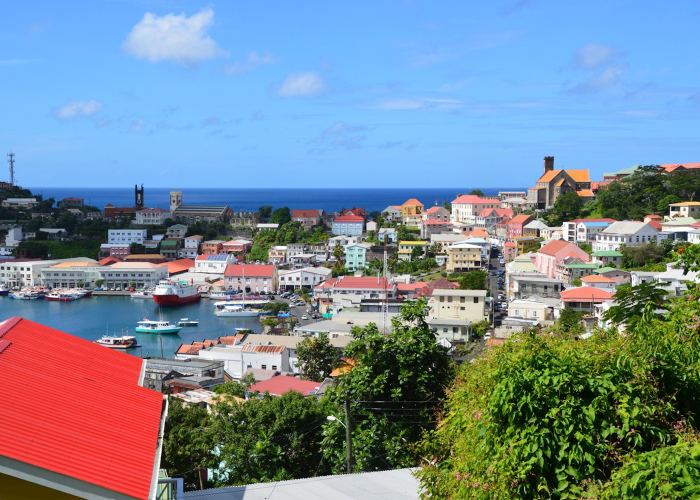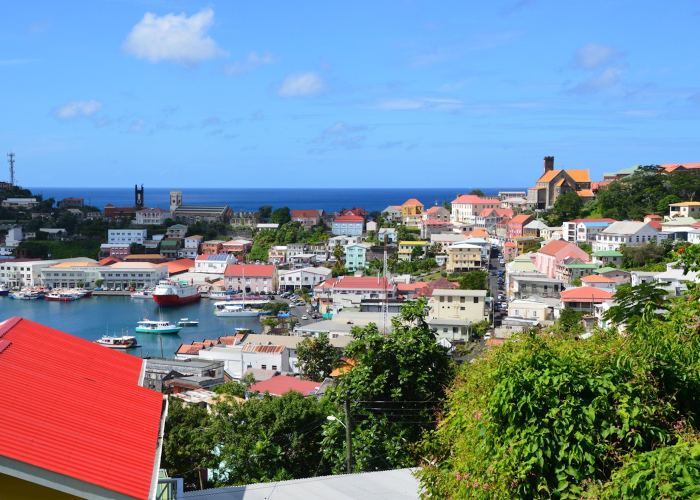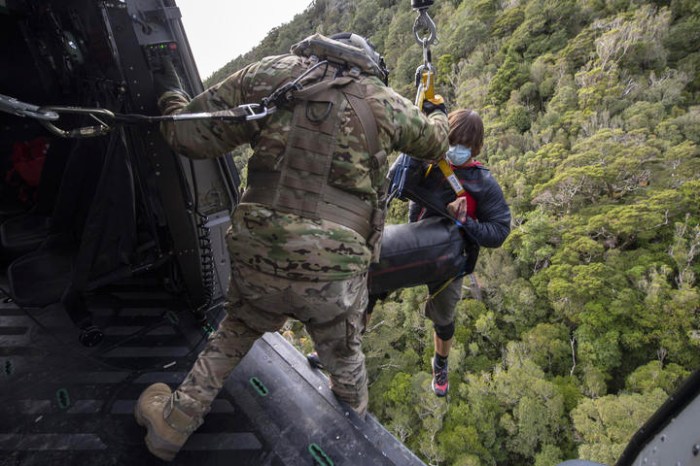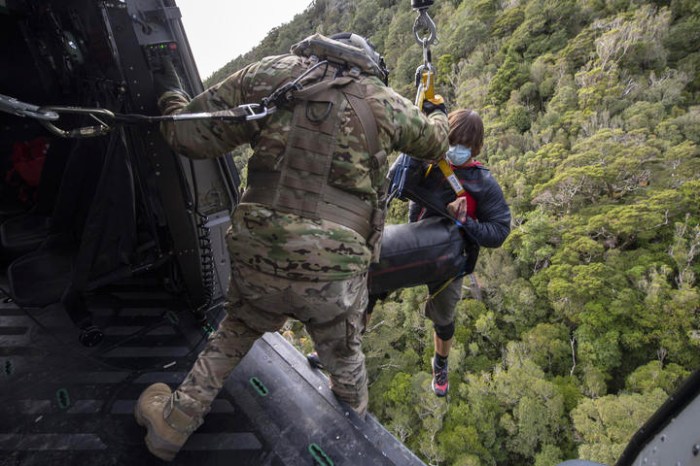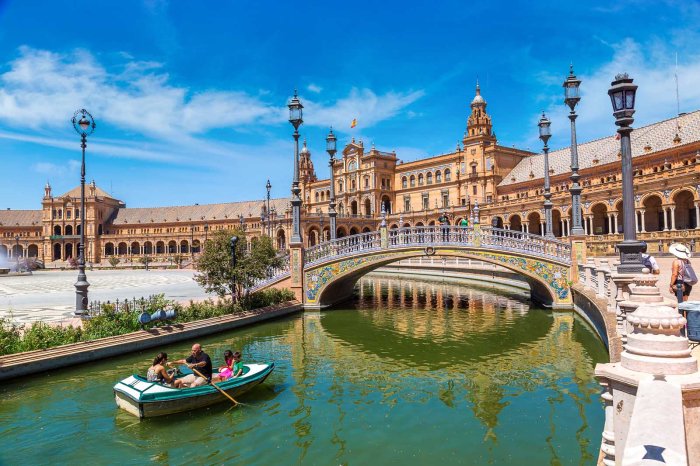Best time to visit Turin: Planning your trip to Turin hinges on understanding the city’s vibrant seasons. From the blossoming spring to the crisp autumn air, each season offers a unique charm and experience. This guide delves into the optimal times to witness Turin’s beauty, explore its cultural gems, and savor its culinary delights, offering valuable insights for crafting the perfect itinerary.
This comprehensive exploration considers seasonal weather patterns, major events, accommodation, transportation, cultural experiences, outdoor activities, and budget considerations. We’ll unpack how each factor plays a role in shaping your Turin adventure, helping you decide when to visit for the most memorable and enjoyable trip.
Seasonal Factors Affecting Tourism
Turin, a city steeped in history and culture, welcomes visitors year-round. However, the best time to experience the city depends significantly on individual preferences and what one hopes to achieve during their visit. Understanding the seasonal nuances of weather, crowds, and events can greatly enhance your trip planning.Seasonal variations in Turin, like many European cities, dramatically impact the tourist experience.
From the vibrant energy of spring blossoms to the crisp air of autumn, each season offers a unique charm. Factors such as weather, crowd levels, and even special events all play a role in shaping the ideal time to explore this fascinating Italian destination.
Spring (March-May)
Spring in Turin brings pleasant temperatures and fewer crowds than the summer months. The city awakens with the blooming of flowers and the arrival of warmer weather, creating a lovely atmosphere for outdoor exploration. This period is generally a good time for a comfortable visit with moderate tourist numbers. Expect some rain, especially in April, which can impact outdoor activities.
Summer (June-August)
Summer in Turin brings hot, sunny days, making it ideal for enjoying the city’s parks and outdoor spaces. However, this is also peak tourist season, meaning higher prices and larger crowds. Heatwaves can be a concern, impacting outdoor activities and potentially requiring adjustments to your itinerary.
Autumn (September-November)
Autumn in Turin presents a beautiful blend of warm days and crisp evenings. Tourist numbers gradually decrease, offering a more relaxed and enjoyable experience. The city’s parks and gardens display a spectacular array of colors, making it a visually appealing time to visit. Rain is more likely than in spring, but the cooler temperatures are usually more comfortable.
Winter (December-February)
Winter in Turin brings cold temperatures and potentially snowy conditions. Tourist numbers are generally lower than in the warmer months. While some may find the winter season less appealing, it offers a unique opportunity to experience Turin in a different light, with the city’s historical architecture often adorned with festive decorations. Be prepared for potential snow and cold weather.
Impact of Weather Events
Unpredictable weather events can significantly affect tourist activity. For example, a heatwave in summer might lead to reduced outdoor time, while a heavy rain shower or snowstorm can impact outdoor excursions. It’s crucial to be prepared for potential changes in plans.
Packing Recommendations
Packing appropriately for each season is crucial. In spring, pack layers to adapt to varying temperatures and potential rain. For summer, lightweight clothing, sunscreen, and a hat are essential. Autumn calls for mid-weight layers, and winter necessitates warm clothing, including waterproof outerwear and comfortable shoes for navigating potentially snowy conditions.
Seasonal Comparison Table
| Season | Average Temperature (°C) | Average Rainfall (mm) | Average Sunshine Hours |
|---|---|---|---|
| Spring | 10-15 | 50-70 | 6-8 |
| Summer | 20-25 | 40-60 | 8-10 |
| Autumn | 10-15 | 70-90 | 5-7 |
| Winter | 0-5 | 30-50 | 2-4 |
Events and Festivals: Best Time To Visit Turin
Turin, a city brimming with history and culture, comes alive with a vibrant calendar of events and festivals throughout the year. These celebrations draw visitors from near and far, enriching the city’s already captivating atmosphere and contributing significantly to its tourism economy. From grand opera performances to bustling food markets, Turin’s events cater to diverse interests, creating a memorable experience for every visitor.Major events and festivals play a crucial role in shaping Turin’s tourism landscape.
Their impact extends beyond mere entertainment, influencing the city’s image and attracting tourists interested in specific themes or experiences. The presence of these events and festivals not only boosts tourism numbers during the relevant periods but also contributes to the city’s overall economic prosperity.
Major Turin Festivals
Turin hosts a plethora of events and festivals, attracting visitors with their unique themes and offerings. These festivals showcase the city’s rich cultural heritage and contribute to its lively atmosphere.
- The Turin Film Festival: A significant international event focusing on cinematic excellence, the Turin Film Festival is a premier platform for showcasing independent films and renowned directors. The festival attracts filmmakers, actors, and cinephiles from across the globe, generating considerable media attention and a boost in tourist numbers, particularly among film enthusiasts.
- The Salone del Mobile.Milano: While not exclusively Turin-based, the Salone del Mobile.Milano is a massive international design event held in Milan, attracting a huge contingent of tourists and professionals from around the world. The event’s influence on the design community and its economic impact are considerable, with visitors often extending their stay in the region to explore the surrounding areas.
- The Turin Chocolate Festival: This popular festival celebrates the city’s rich chocolate-making tradition. It offers a wide array of chocolate-related activities, from tastings to workshops, attracting sweet-tooth enthusiasts and chocolate aficionados, generating excitement and a noticeable influx of tourists eager to indulge in the delicious treats.
- The Turin Christmas Market: This annual festive market, held during the holiday season, creates a magical atmosphere with its traditional stalls, handcrafted gifts, and warm festive ambiance. The market’s popularity draws a significant number of visitors seeking a unique holiday experience, further contributing to tourism numbers during the winter months.
Festival Schedule and Details
The following table provides a snapshot of significant events, outlining their dates, themes, and locations.
| Event | Dates | Theme | Location |
|---|---|---|---|
| Turin Film Festival | Usually October/November | International Cinema | Various venues throughout Turin |
| Salone del Mobile.Milano | Usually April | International Design | Milan |
| Turin Chocolate Festival | Usually Spring/Summer | Chocolate | Various venues throughout Turin |
| Turin Christmas Market | Usually December | Festive Traditions | Piazza Castello or other central locations |
Accommodation and Transportation
Turin, a vibrant city brimming with history and culture, welcomes visitors year-round. Navigating the city’s charm, however, requires understanding the nuances of accommodation and transportation, especially considering seasonal variations. This section dives deep into the availability, pricing, and efficiency of these crucial aspects of a Turin visit.Understanding the availability and cost of accommodation, coupled with the efficiency of transportation, significantly impacts the overall travel experience.
Different seasons bring different levels of demand, influencing both prices and the ease of movement within the city.
Accommodation Availability and Pricing, Best time to visit turin
Accommodation options in Turin range from budget-friendly hostels to luxurious hotels, catering to diverse needs and budgets. The availability and pricing of these options fluctuate significantly depending on the time of year. During peak seasons, like summer and major holidays, demand increases, leading to higher prices and potentially limited availability. Conversely, off-peak seasons, such as the shoulder seasons and winter, offer a wider selection of accommodations at more competitive rates.
Transportation Infrastructure and Efficiency
Turin boasts a well-developed transportation network, including a metro system, trams, buses, and a reliable train connection. The efficiency of this system varies slightly depending on the season. During peak tourist seasons, the public transportation system might experience slightly higher passenger loads, which can sometimes lead to longer wait times or slightly slower travel times. However, the system remains remarkably effective throughout the year.
Transportation Costs During Peak and Off-Peak Seasons
Transportation costs in Turin generally follow the pattern of accommodation pricing. During peak tourist seasons, prices for transportation, including metro tickets and bus fares, might be slightly higher. Off-peak seasons typically offer more affordable options, making it a great time to explore the city at a more budget-friendly pace.
Choosing the Best Transportation Method for Tourists
For tourists visiting Turin, the most convenient transportation method often depends on their itinerary and the specific areas they wish to explore. The metro is an excellent option for traversing the city center efficiently, while trams and buses provide broader access to different neighborhoods. Considering the duration of your stay and your desired destinations is key to choosing the best method.
For longer journeys outside the city center, the train network is a highly recommended choice.
Accommodation Options and Costs
| Accommodation Type | Approximate Cost (per night) | Location |
|---|---|---|
| Budget-friendly Hostel | €20-€50 | City Center |
| Mid-range Hotel | €80-€150 | City Center & surrounding areas |
| Luxury Hotel | €150+ | City Center & exclusive areas |
| Airbnb Apartment | €60-€200+ | City Center & surrounding areas |
Note: Prices are estimates and may vary based on specific hotel/hostel/Airbnb properties and the time of year.
Cultural and Historical Experiences
Turin’s rich tapestry of history and culture is a feast for the senses, waiting to be explored. From the grand palaces to the intimate museums, the city’s historical sites offer a glimpse into the past. However, the best time to experience these gems often depends on the season, as factors like crowds, weather, and special events influence the overall experience.
Understanding these nuances allows visitors to plan their cultural adventures for optimal enjoyment.The impact of the seasons on Turin’s cultural and historical sites is significant. Spring and fall offer pleasant temperatures and fewer crowds compared to the summer heat and winter chill. These shoulder seasons allow for a more immersive and relaxed experience, allowing visitors to appreciate the architectural details and historical significance of the sites without feeling rushed or overwhelmed.
Seasonal Impact on Museum Experiences
Turin’s museums, showcasing a diverse range of art, history, and science, are impacted by seasonal fluctuations in visitor numbers. Summer months see a surge in tourists, leading to longer queues and potentially less personal interaction with the exhibits. Conversely, winter months, while potentially offering shorter queues, might see fewer staff members and potentially limited operating hours. Fall and spring generally offer a sweet spot in terms of crowds and weather, providing a more balanced and enjoyable experience.
Optimal Times for Specific Sites
For the Royal Palace, spring and fall provide an ideal balance of pleasant weather and manageable crowds. The Egyptian Museum, known for its fascinating artifacts, may experience larger crowds during peak tourist seasons. Spring and autumn are usually the best times to avoid large crowds and enjoy the exhibits at a slower pace. The Mole Antonelliana, a notable landmark, presents a similar pattern, with spring and fall offering an excellent balance.
Spring is generally the best time to visit Turin, with pleasant temperatures and fewer crowds. However, if you’re passionate about wildlife conservation, and especially considering the plight of koalas, you might want to look into the current situation with endangered species in Australia. Koalas endangered species Australia are facing serious threats, and supporting organizations dedicated to their protection is a great way to learn more about conservation efforts.
Ultimately, the best time to visit Turin depends on your interests, but spring offers a fantastic balance of weather and fewer tourists.
Seasonal Cultural Events
Turin hosts a variety of cultural events throughout the year. Some events, like the Turin Film Festival, are held in specific seasons. These events can significantly influence the visitor flow and the overall experience.
Maximizing the Cultural Experience in Each Season
- Spring: Ideal for outdoor activities, exploring the city’s parks, and enjoying the blooming flowers. Museums and galleries often see moderate crowds, allowing for a good balance of enjoyment and exploration.
- Summer: While potentially more crowded, summer offers opportunities to participate in outdoor events and festivals. Plan museum visits strategically, possibly early morning or late afternoon to avoid peak hours.
- Autumn: Pleasant weather and fewer crowds make autumn an excellent time for in-depth exploration of Turin’s cultural and historical sites. Enjoy the colorful foliage as you discover hidden gems.
- Winter: Winter provides a unique opportunity to experience Turin’s charm in a different light. Many museums and galleries remain open, and the city often hosts winter festivals, creating a unique experience.
Accessibility of Cultural and Historical Sites
Turin’s cultural and historical sites are generally accessible throughout the year, though accessibility might vary depending on the specific site. Winter can affect outdoor spaces, potentially limiting certain activities. Always check the specific site’s operating hours and accessibility information before your visit. Information regarding accessibility can often be found on the official website or through a dedicated accessibility section.
Outdoor Activities and Leisure

Turin offers a wealth of outdoor experiences, catering to various interests and weather conditions. From exploring the city’s parks to engaging in seasonal sports, there’s something for everyone. Understanding the best time to enjoy these activities and the impact of weather is key to making the most of your Turin adventure.Outdoor activities in Turin are a dynamic experience, significantly influenced by the seasons.
The city’s pleasant climate allows for diverse activities throughout the year, from picnics in spring to skiing in winter. Understanding the weather patterns and associated costs will help you tailor your outdoor pursuits to your budget and preferences.
Springtime Adventures
Spring in Turin is a time of renewal and blossoming, ideal for exploring the city’s parks and gardens. The weather is typically mild, with pleasant temperatures perfect for outdoor walks, picnics, and bike rides.
- Park Visits and Picnics: The parks of Turin, such as the Parco del Valentino, come alive with spring flowers and greenery. Picnics are a popular pastime, with vendors offering delicious treats and snacks to enhance the experience. Enjoying a relaxed lunch surrounded by nature is a delightful way to spend a spring afternoon.
- Bike Tours: The city’s well-maintained bike paths are perfect for leisurely rides through the parks and along the Po River. Rental options are readily available throughout the city. Exploring the city’s hidden corners on two wheels is a great way to appreciate the beauty of Turin.
- Outdoor Markets: Spring brings a vibrant array of farmers’ markets and craft fairs to the city. These events provide opportunities to discover local produce, artisanal goods, and enjoy live music in a lively atmosphere. Support local artisans and sample fresh produce in a delightful atmosphere.
Summertime Excursions
Summer in Turin offers opportunities for active pursuits and enjoying the warmer weather. While the city’s temperature can reach higher levels, the presence of shaded areas and water features provide relief from the heat.
- Swimming and Water Activities: The Po River offers opportunities for swimming and boating, especially along the less crowded stretches. Swimming pools and other water activities are also available in the city’s parks and recreation areas.
- Outdoor Concerts and Events: Turin hosts numerous open-air concerts and events during the summer months. Check local listings for a wide range of musical performances, cultural shows, and other entertainment in the open air.
- Hiking and Trekking: The surrounding hills and mountains offer opportunities for scenic hikes and trekking, providing a chance to escape the city bustle and enjoy the natural beauty of the region. Plan your excursions in advance and respect the local environment.
Autumnal Explorations
Autumn in Turin offers a beautiful transition from summer to winter. The crisp air and vibrant colors of the foliage make it an excellent time for outdoor activities.
- Outdoor Festivals: Autumn brings a variety of festivals and events, including wine tastings and harvest celebrations. Explore the city’s offerings and savor the seasonal flavors. Engage in local traditions and celebrate the harvest season with the local community.
- Cycling Tours: The pleasant temperatures and fewer crowds make autumn a great time for cycling tours, exploring the city’s parks and routes. Enjoy the cooler air and vibrant autumn foliage while cycling.
- Visits to Wine Regions: The surrounding Piedmont wine regions offer fantastic opportunities for wine tasting and vineyard tours during autumn. Experience the local culture and appreciate the harvest season’s bounty.
Winter Sports and Activities
Winter in Turin presents a different set of outdoor activities. The city is equipped with ski slopes and other winter sports facilities.
- Skiing and Snowboarding: Turin’s proximity to ski resorts offers a variety of options for winter sports enthusiasts. Explore the nearby mountains and enjoy the thrill of skiing or snowboarding.
- Ice Skating: Indoor and outdoor ice skating rinks are popular destinations during winter, providing a fun and engaging activity for families and individuals. Enjoy a unique winter pastime.
- Cozy Cafes and Restaurants: Winter offers a chance to enjoy the city’s warm cafes and restaurants in a relaxed and comfortable atmosphere. Savor delicious food and drinks while staying warm and cozy.
Seasonal Activity Comparison Table
| Season | Best Outdoor Activities | Weather Impact | Cost Comparison |
|---|---|---|---|
| Spring | Park visits, picnics, bike tours, outdoor markets | Mild, pleasant temperatures | Moderate |
| Summer | Swimming, water activities, outdoor concerts, hiking | Warm, potentially hot temperatures | Moderate to High |
| Autumn | Outdoor festivals, cycling tours, wine region visits | Pleasant, crisp air, vibrant foliage | Moderate |
| Winter | Skiing, snowboarding, ice skating, cozy cafes | Cold, snowy conditions | High |
Budget Considerations
Planning a trip to Turin involves more than just choosing the perfect time; it also necessitates careful budgeting. Understanding how costs fluctuate throughout the year is crucial for maximizing your experience without breaking the bank. This section will detail accommodation, food, transportation, and attraction entry costs, highlighting potential savings during the off-season.
Spring is generally the best time to visit Turin, with pleasant temperatures and fewer crowds. But, like the debate over whether unlimited PTO is a genuine perk or a deceptive ploy, is unlimited pto a sham or a real perk , the ideal time for your trip hinges on your priorities. So, consider the weather, your budget, and your personal preferences to make the most of your Turin adventure!
Turin’s charm extends beyond its historical significance and vibrant culture; its affordability is another compelling aspect. The cost of living in Turin is generally moderate compared to other major European cities. However, seasonal variations in demand directly impact prices for accommodation, dining, and transportation. Being aware of these fluctuations empowers you to make informed decisions about your budget and maximize your enjoyment.
Spring is generally the best time to visit Turin for pleasant weather and fewer crowds. However, if you’re looking for something specific like the best workshops in San Juan, you might want to check out the best workshops san juan page to see if the dates coincide with your ideal Turin trip. Ultimately, Turin is beautiful year-round, so choose the time that best fits your interests!
Accommodation Costs
Accommodation prices in Turin respond directly to seasonal demand. Peak season, encompassing major holidays and summer months, typically sees higher rates. Hotels and Airbnb listings tend to command premium prices during these times. Conversely, the off-season offers significant opportunities for cost savings, with discounts and special deals frequently available.
Food Costs
Food costs in Turin are relatively stable throughout the year. However, restaurants and cafes might see slightly higher prices during peak tourist seasons. While the difference might not be dramatic, mindful choices like utilizing local markets or enjoying picnics can lead to considerable cost savings. Exploring local trattorias and pizzerias during the off-season offers a chance to discover authentic culinary experiences without a premium price tag.
Transportation Costs
Public transportation in Turin is generally affordable. However, similar to accommodation and food, costs may slightly increase during peak seasons. Consider purchasing a multi-day or weekly pass for cost-effectiveness, especially if you plan to use public transportation frequently.
Attraction Entry Costs
Entry fees for attractions in Turin remain relatively consistent throughout the year. However, some museums or specific events might have slightly higher costs during popular periods. Furthermore, consider purchasing Turin City Cards, which often provide discounts or free access to numerous attractions. Planning ahead and purchasing tickets in advance can also potentially help reduce costs.
Cost Comparison by Season
| Season | Average Daily Expenses (Estimated) |
|---|---|
| Peak Season (Summer/Holidays) | €150-€200 |
| Shoulder Season (Spring/Autumn) | €120-€150 |
| Off-Season (Winter) | €100-€120 |
Note: These figures are estimates and can vary depending on individual choices, accommodation preferences, and dining choices. The costs for food, accommodation, and attractions may differ slightly based on the type of accommodation or restaurants you choose.
Potential Off-Season Savings
Visiting Turin during the off-season offers significant opportunities to save money. Accommodation and transportation costs tend to be lower, and you may encounter fewer crowds, leading to a more relaxed and enjoyable experience. Dining options and attraction entry fees generally remain stable, offering opportunities for exploring Turin at a lower cost. Furthermore, quieter streets and fewer tourists can create a more immersive and personal experience, making the off-season a compelling choice for budget-conscious travelers.
Alternative Activities and Experiences in Turin
Turin, beyond its renowned museums and historical landmarks, offers a vibrant tapestry of alternative experiences. This section explores hidden gems and unique activities, highlighting how the season impacts availability and showcasing seasonal events that enrich the city’s character. Delving deeper into the local culture reveals a multifaceted city beyond the typical tourist trail.
Local Markets and Food Experiences
Turin’s vibrant markets are more than just places to buy groceries; they’re cultural hubs. The seasonal availability of fresh produce and local delicacies varies considerably. Winter markets often feature hearty soups, roasted meats, and warming beverages, while summer markets showcase fresh fruits, vegetables, and local cheeses. Exploring these markets provides a deeper understanding of Turin’s culinary traditions and offers a taste of local life.
A visit to the lively Porta Palazzo market or the more traditional San Massimo market can be a delightful way to experience local life.
Neighborhood Exploration and Local Shops
Discovering the city’s unique neighborhoods is key to appreciating the character of Turin. Each neighborhood has its own charm, from the historical heart of the city to the more modern and residential areas. Independent boutiques, artisan workshops, and local shops often offer unique souvenirs and experiences. The atmosphere and availability of shops differ based on the season.
Winter often brings a sense of cozy comfort, with warm shops and potentially reduced outdoor market activity. Summer, however, might see increased outdoor seating and bustling markets. A walk through the neighborhoods of Borgo Dora, or the more traditional neighborhood of Valdocco, can reveal a side of Turin that typical tourist routes often miss.
Outdoor Activities Based on Season
Turin’s parks and green spaces offer diverse opportunities for outdoor enjoyment. The accessibility and suitability of activities like picnics, jogging, or cycling in parks are affected by the weather. During the warmer months, parks become hubs for outdoor gatherings, picnics, and outdoor sports. Winter, on the other hand, may see reduced outdoor activity, but often brings the chance to enjoy the park’s different character under snow or during the colder season.
Seasonal Events and Festivals
Turin’s calendar is filled with festivals and events tied to particular seasons. Winter often sees Christmas markets with traditional crafts and local delicacies, creating a festive atmosphere. Summer might feature outdoor concerts, film festivals, and community events. Attending these events allows visitors to experience the city’s vibrant culture and engage with locals. The Turin Film Festival, held in the summer months, is a popular example of a significant event that attracts both residents and tourists.
Alternative Recommendations Based on Season
- Winter: Visit the Christmas markets, explore the city’s cozy cafes, and enjoy the winter sports opportunities in the surrounding Alps. Attend a traditional opera performance at the Teatro Regio, which often hosts special winter events.
- Spring: Explore the city’s parks, enjoy picnics, and visit the local flower markets. Attend outdoor concerts and exhibitions that are typically held in open spaces.
- Summer: Take a bike tour of the city, enjoy the city’s parks, and attend the Turin Film Festival. Explore the city’s many outdoor cafes and enjoy the summer atmosphere. Enjoy the many local food and wine festivals during the warmer months.
- Autumn: Visit the city’s food and wine festivals, and enjoy the beautiful autumn colors in the surrounding hills. Enjoy the cooler temperatures for outdoor walks and exploring the city.
Summary

Ultimately, the best time to visit Turin depends on your priorities. If you crave vibrant festivals and bustling crowds, summer might be ideal. For a more relaxed experience with pleasant weather and fewer tourists, spring or autumn could be perfect choices. No matter when you choose to go, Turin promises a captivating journey through its rich history, culture, and captivating ambiance.
Remember to factor in your budget and preferences when making your decision.

